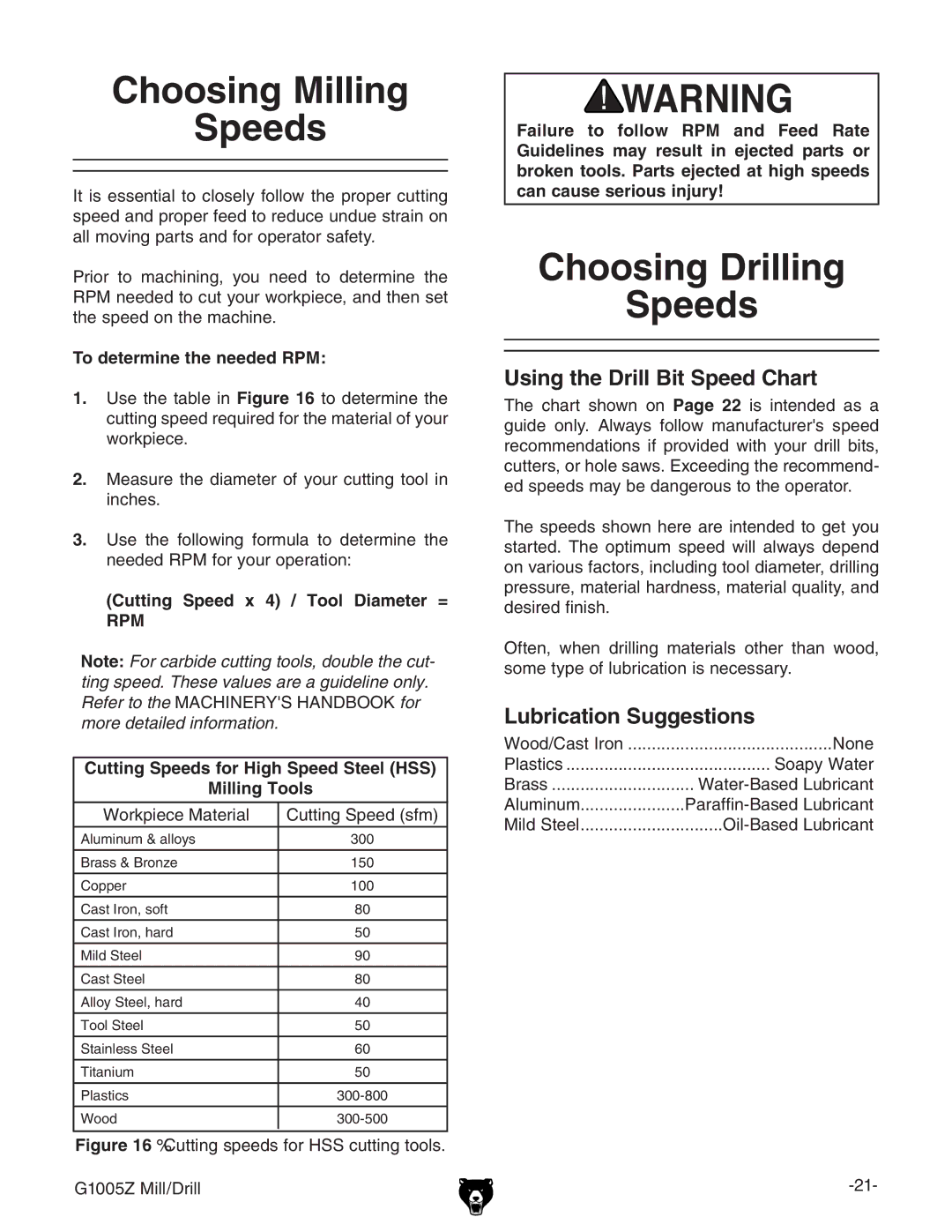
Choosing Milling
Speeds
It is essential to closely follow the proper cutting speed and proper feed to reduce undue strain on all moving parts and for operator safety.
Prior to machining, you need to determine the RPM needed to cut your workpiece, and then set the speed on the machine.
To determine the needed RPM:
1.Use the table in Figure 16 to determine the cutting speed required for the material of your workpiece.
2.Measure the diameter of your cutting tool in inches.
3.Use the following formula to determine the needed RPM for your operation:
(Cutting Speed x 4) / Tool Diameter =
RPM
Note: For carbide cutting tools, double the cut- ting speed. These values are a guideline only. Refer to the MACHINERY'S HANDBOOK for more detailed information.
Cutting Speeds for High Speed Steel (HSS)
Milling Tools
Workpiece Material | Cutting Speed (sfm) |
|
|
Aluminum & alloys | 300 |
|
|
Brass & Bronze | 150 |
|
|
Copper | 100 |
|
|
Cast Iron, soft | 80 |
|
|
Cast Iron, hard | 50 |
|
|
Mild Steel | 90 |
|
|
Cast Steel | 80 |
|
|
Alloy Steel, hard | 40 |
|
|
Tool Steel | 50 |
|
|
Stainless Steel | 60 |
|
|
Titanium | 50 |
|
|
Plastics | |
|
|
Wood | |
|
|
Figure 16. Cutting speeds for HSS cutting tools.
G1005Z Mill/Drill
Failure to follow RPM and Feed Rate Guidelines may result in ejected parts or broken tools. Parts ejected at high speeds can cause serious injury!
Choosing Drilling
Speeds
Using the Drill Bit Speed Chart
The chart shown on Page 22 is intended as a guide only. Always follow manufacturer's speed recommendations if provided with your drill bits, cutters, or hole saws. Exceeding the recommend- ed speeds may be dangerous to the operator.
The speeds shown here are intended to get you started. The optimum speed will always depend on various factors, including tool diameter, drilling pressure, material hardness, material quality, and desired finish.
Often, when drilling materials other than wood, some type of lubrication is necessary.
Lubrication Suggestions
Wood/Cast Iron | ...........................................None |
Plastics | Soapy Water |
Brass | |
Aluminum | |
Mild Steel |
